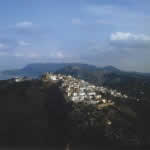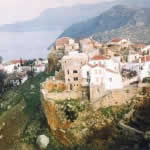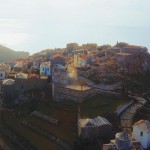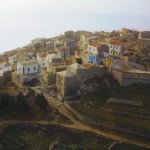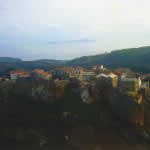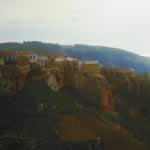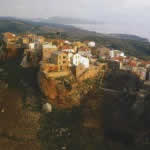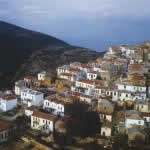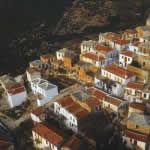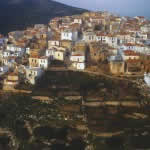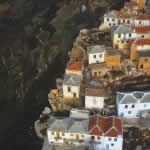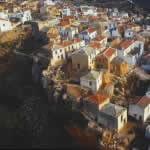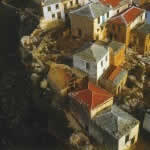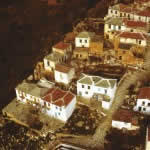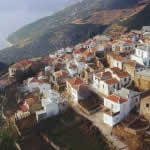The ancient, fortified Chora of Alonnisos was the centre of habitation until 1965 when a heavy earthquake caused the people to move down to the coast. These photographs were taken 11 years later, in December 1976.
The majority of the mostly small stone houses did not collapse; they could have been rebuilt by the local people – but it was the trend of the time to abandon inland villages on islands in the Aegean and elsewhere in the Mediterraean Region and to move nearer to the shore line. One of the reasons why the islanders lived inland was the permanent threat by pirates. But there existed other causes as well, besides historical constellations the richer soil inland and the better climate. Alonnisos way back into the past used to be inhabited by an agricultural population (cf. the article Old Alonnisos – coast and countryside).
At the time these photographs were taken (during a helicopter flight to Piperi Island, cf. the article Seals and fishermen united in one boat), foreigners had just began to refurbish houses in Chora, but the views represent mostly the original condition.
